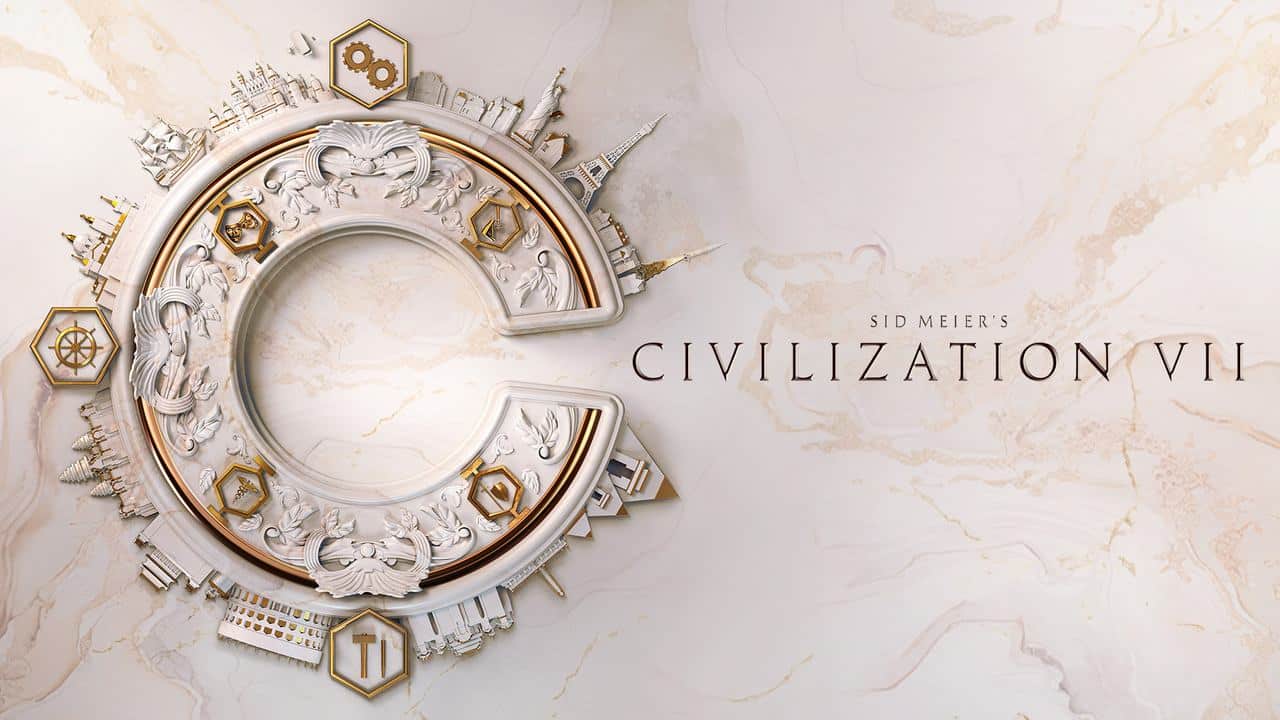
Civilization VII brings major changes to the long-running strategy series. Instead of refining past gameplay mechanics, Firaxis takes a new approach, introducing a leader-focused system, shifting civilizations, and structured ages. These changes push the series in a new direction while keeping its turn-based foundation intact.
As someone who has played Civilization for years, I was curious to see how these updates would impact the familiar formula. The shift from guiding a single empire to adapting through different ages felt awkward at first, but it quickly became clear that Firaxis wanted to shake up the usual strategies. This isn’t just another iteration—it’s a reimagining of how a Civilization campaign unfolds.
With a new structure and major gameplay games, Civilization VII offers a different kind of experience. How well do these changes work? That’s the big question. Let’s find out!
History Rewritten
Civilization VII takes a different approach to historical storytelling. Instead of guiding one civilization from start to finish, you control a single leader while civilizations change across three structured ages. This shift alters how history plays out, making each campaign feel less like a linear progression and more like a collection of key moments.
The structured ages—Antiquity, Exploration, and Modern—define how civilizations evolve. Instead of a continuous timeline, each age acts as a distinct phase, with events shaping the world and forcing adaptation. A war in the final days of one age may be erased by the reset of the next. Diplomatic relationships, ongoing conflicts, and independent powers disappear, making each transition a fresh start. While this removes some of the long-term continuity found in past games, it also creates new storytelling moments where civilizations rise, fall, and transform.
In one campaign, I started as Egypt, focused on early expansion and trade. When the Exploration Age arrived, I shifted into the Songhai, adapting to new military and economic priorities. By the Modern Age, I was leading Japan, relying on technology to maintain my power. Watching my nation change forced me to think differently about historical progression—it wasn’t about a single empire’s dominance but about how different civilizations could build upon past strengths.
Leaders remain constant throughout, providing a sense of continuity even as civilizations change. They react to wars, trade deals, and global events, making diplomacy feel more dynamic. However, their limited dialogue and interactions make them feel more like figureheads than true personalities shaping history. Despite that, Civilization VII delivers a fresh take on historical storytelling, challenging how you view progress and strategy across different ages.
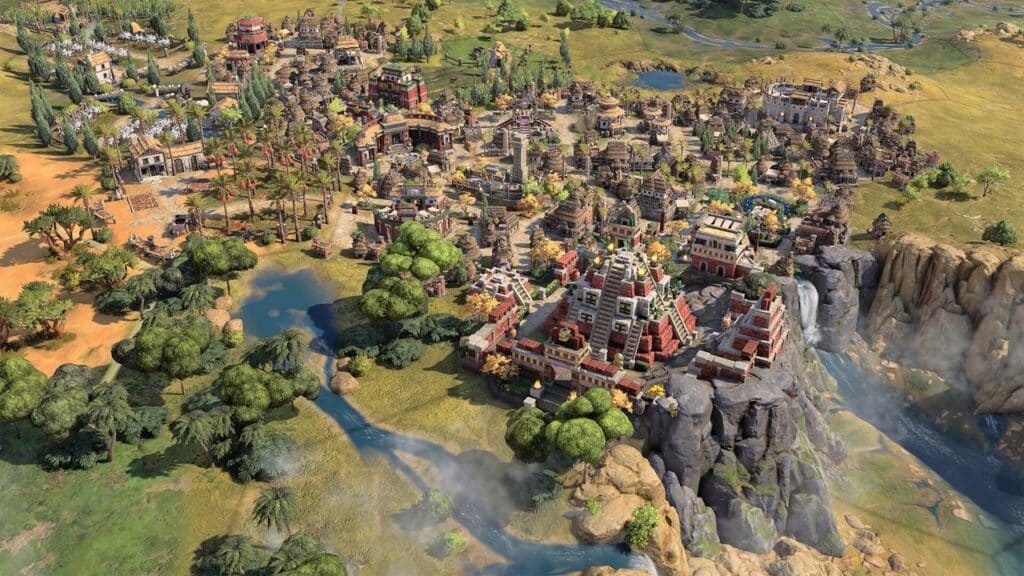
A New Way to Build an Empire
Civilization VII changes how you shape history. Instead of leading one civilization from start to finish, you control a persistent leader while your nation shifts across three structured ages. This new system forces you to adapt, making each campaign unfold differently than in past games.
City-building has been reworked to reduce micromanagement while keeping meaningful expansion. Instead of founding cities outright, you first establish towns, which can remain specialized settlements or grow into full cities. This system allows for flexible empire development while keeping resource management important. Resources also change in value as ages progress, adding new incentives for expansion.
Combat is more tactical, with commanders leading armies and granting bonuses. These leaders gain experience and specialize in different areas, making unit placement more important. However, unit visibility in cities can be an issue, making it harder to manage large battles.
Diplomacy and trade have been simplified. Instead of micromanaging individual deals, you engage in broader agreements that provide ongoing benefits or penalties. While this streamlines interactions, it removes some of the detailed trade and negotiation options from past entries.
Civ-switching forces you to rethink long-term plans. Your nation shifts based on geography and past decisions, making flexibility essential.
Firaxis has reworked many mechanics, keeping the core strategy intact while encouraging new ways to play. Some changes may take time to adjust to, but they make each campaign feel different from the last.
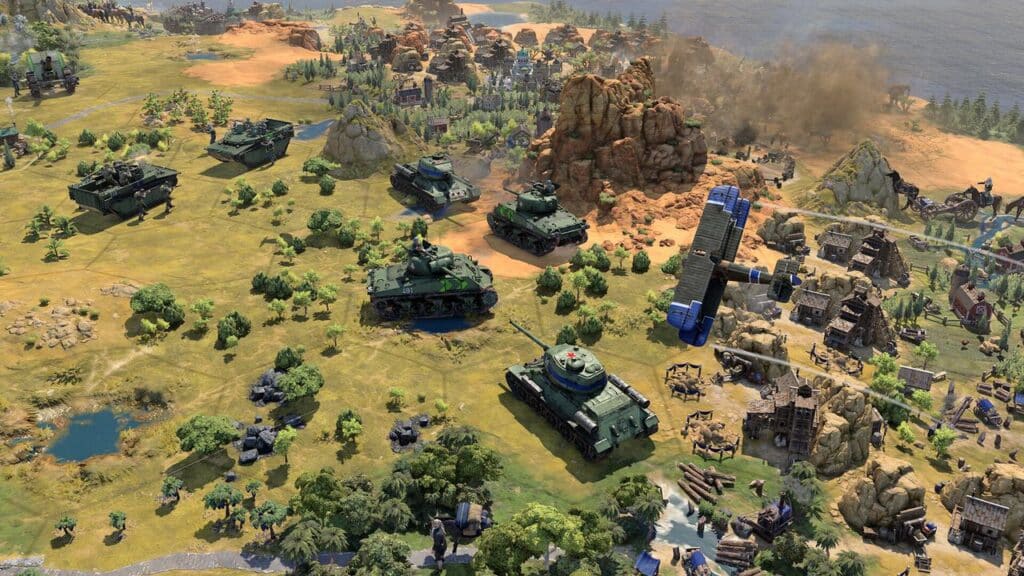
A New Look for Civilization
Civilization VII moves away from the brighter, stylized visuals of previous games in favour of a more grounded and realistic presentation. Cities are more detailed, terrain types are more distinct, and character models have a stronger presence in diplomacy screens. The darker look gives the game a different tone compared to other games in the series.
Leader animations bring diplomacy to life, with characters reacting to war declarations, trade deals, and shifting alliances. Combat animations are smooth, but battles can be hard to follow when too many troops overlap in city areas. The lack of clear unit markers makes it harder to track armies at a glance, which can be frustrating in large-scale wars.
The UI has some usability issues. Important information, like resource stockpiles and trade goods, is often buried in submenus, making it harder to access key details quickly. The resource management interface, in particular, feels unintuitive, requiring extra steps to organize and view trade goods. These issues don’t ruin the game but make some actions more tedious than they should be.
On the audio side, Civilization VII has a strong soundtrack that changes with each age, reflecting the era’s culture and technology. However, leaders have fewer voiced lines and less expressive reactions compared to past games, making diplomacy feel less dynamic. The game’s narrator, voiced by Gwendoline Christie, brings weight to historical moments, though some may miss the more conversational style of previous narrators.
While some UI and visibility issues remain, Civilization VII delivers a well-crafted presentation that reinforces its shift toward a more serious tone.
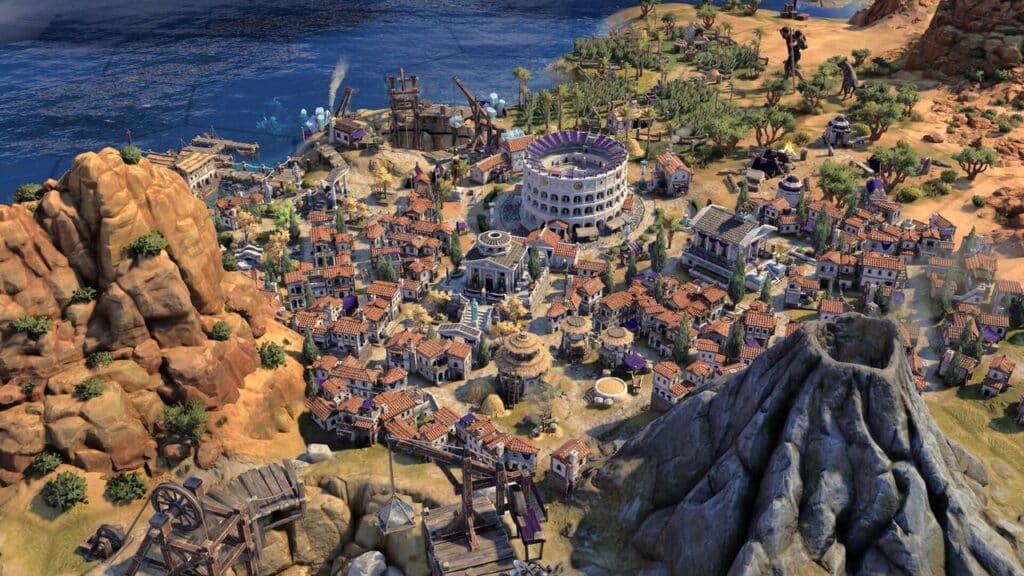
Strategy with Friends
Civilization VII keeps the series’ familiar multiplayer structure, allowing friends and strangers to compete or cooperate in long-term campaigns. Online and local options return, with turn-based matches supporting simultaneous moves to speed up gameplay. While the core experience remains intact, some changes affect how multiplayer plays compared to past entries.
In my experiences, matchmaking and connectivity were stable. However, larger games with multiple players can result in sync issues and occasional connection drops. Turn timers help keep matches moving, but late-game turns can still take longer than expected due to increased decision-making.
The game modes follow past Civilization titles, with options for standard matches, custom rule sets, and cooperative play. The ability to start in different ages works well for multiplayer, letting groups jump into mid-game scenarios instead of always beginning in Antiquity. However, diplomacy between players is more limited, with fewer options for alliances, trade deals, and strategic negotiations.
UI issues carry over from single-player, making resource tracking and deal-making more cumbersome. Information that should be easily accessible—like trade agreements or military pacts—is sometimes buried in menus, slowing down negotiations.
Compared to Civilization VI, multiplayer in Civilization VII keeps the fundamentals intact but removes some flexibility in diplomatic play. While the new mechanics add variety, limited diplomacy options and occasional connection issues make multiplayer less flexible than in past games.
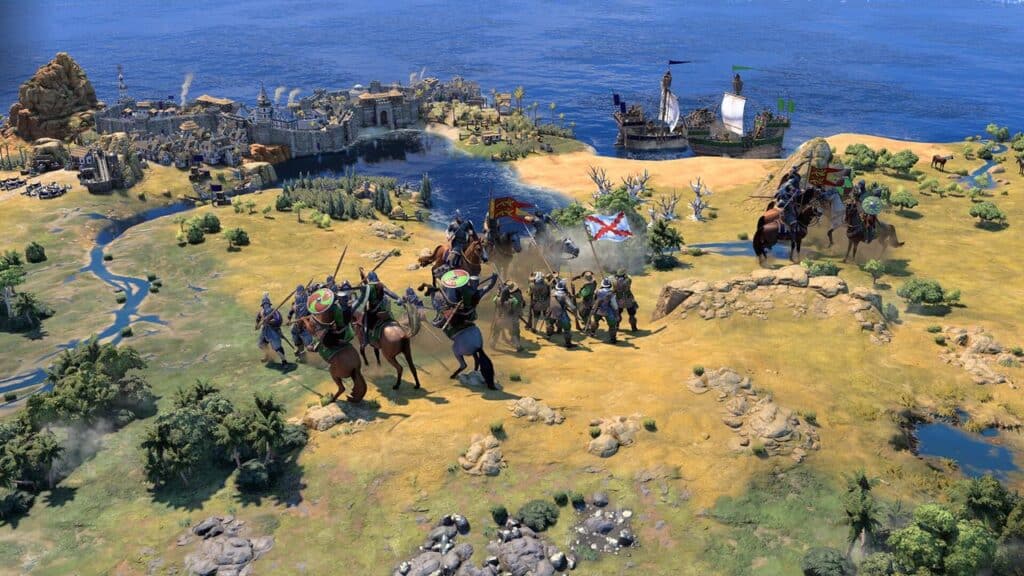
Civilization VII Reinvents the Formula but Stays True to Strategy
Civilization VII takes bold steps to reshape the series. The shift to a leader-focused system, structured ages, and civ-switching pushes strategy in new directions. Some long-standing gameplay mechanics have been streamlined or replaced, making the game feel different from previous games while still maintaining its core turn-based gameplay.
At first, I wasn’t sure how I’d feel about changing civilizations mid-game. Past Civilization entries built on the idea of leading a single empire through history, so adjusting to a system where nations evolve across ages felt unusual. But after several campaigns, I started appreciating the flexibility. Each transition forced me to rethink my strategy, making every playthrough feel different.
That said, some changes don’t land as well. Diplomacy has fewer options, making alliances and rivalries feel less interactive and strategic. The UI buries important information, making some actions more frustrating than they should be. Multiplayer keeps Civilization’s classic structure but offers fewer ways to interact diplomatically.
Compared to Civilization VI, this entry feels like a reimagining rather than a direct evolution. Some features feel stripped back, while others—like city-building, combat, and exploration—offer new approaches that make each age distinct. Whether these changes improve the experience depends on what you value in a Civilization game.
For newcomers, Civilization VII is an easier entry point, thanks to streamlined gameplay mechanics and a structured timeline. For longtime fans, the shift away from a continuous empire may take some adjustment. For those open to a new approach, Civilization VII offers new strategic possibilities worth exploring.
Sid Meier’s Civilization VII

Summary
Civilization VII reshapes the series with leader-focused gameplay, structured ages, and civ-switching. City-building and combat feel new, but diplomacy is more limited. While the UI has usability issues, core turn-based strategy remains intact. It’s a bold reimagining, though some changes may not appeal to longtime fans.
As always, remember to follow us on our social media platforms (e.g., Threads, X (Twitter), Bluesky, YouTube, and Facebook) to stay up-to-date with the latest news. This website contains affiliate links. We may receive a commission when you click on these links and make a purchase, at no extra cost to you. We are an independent site, and the opinions expressed here are our own.











